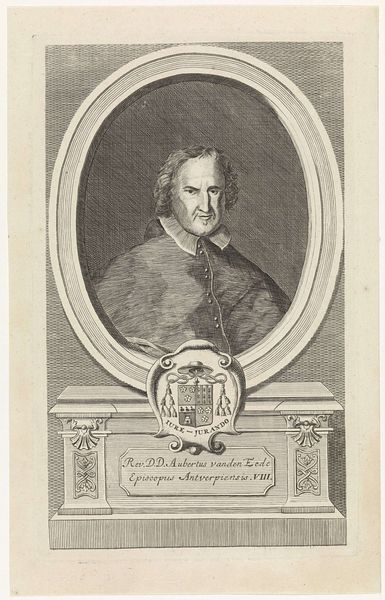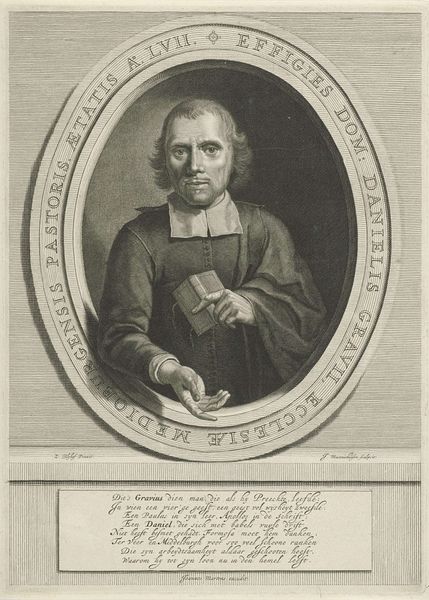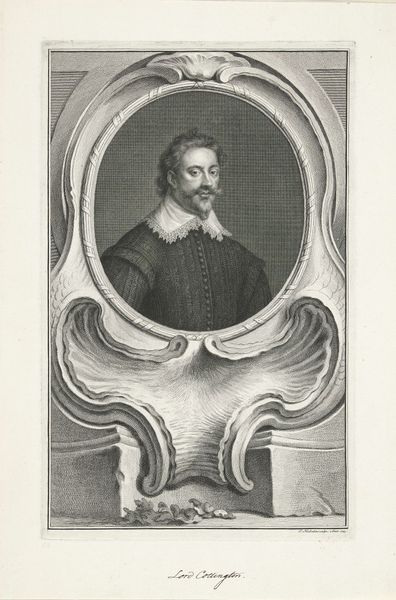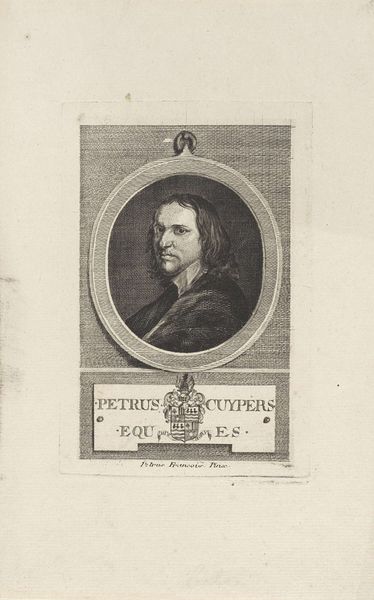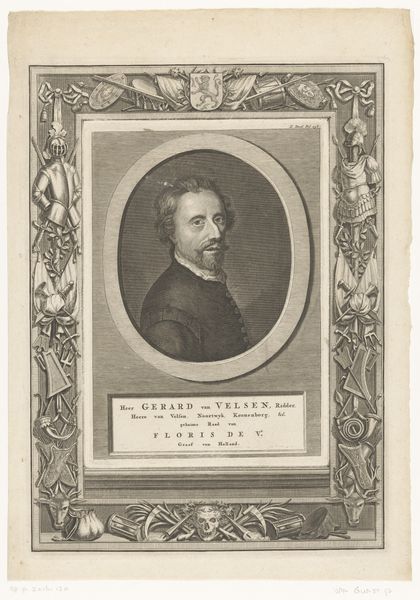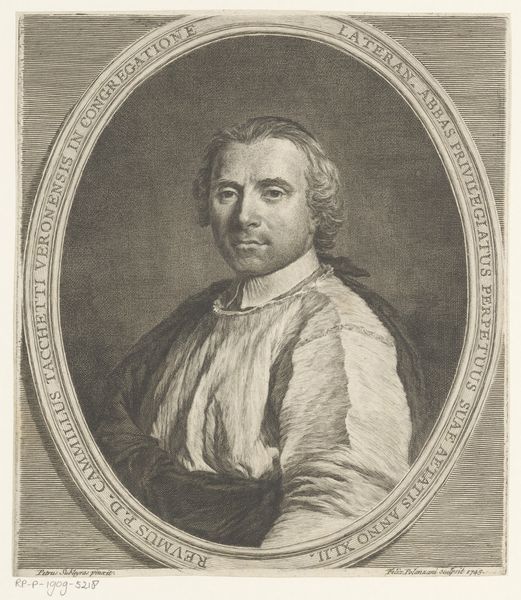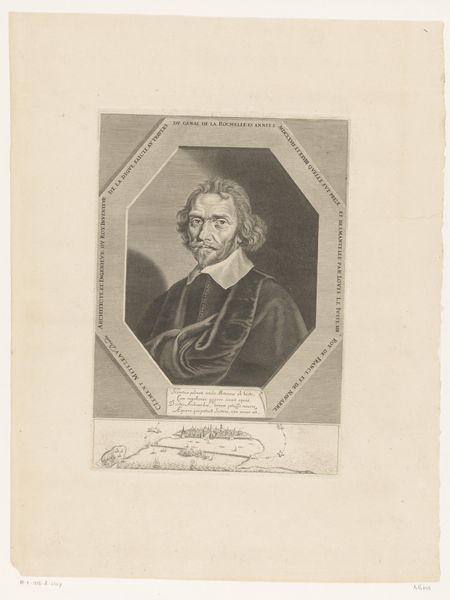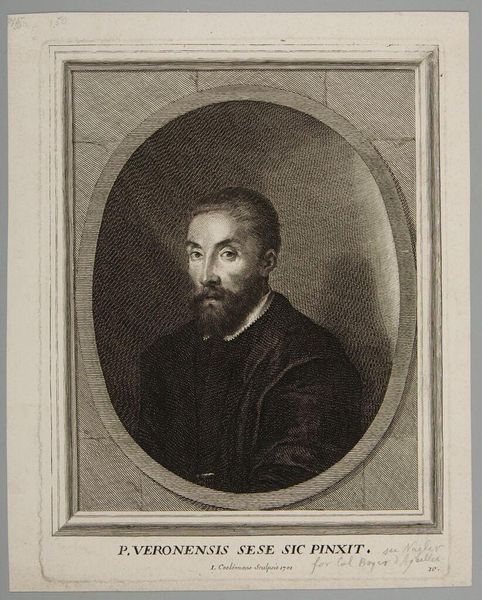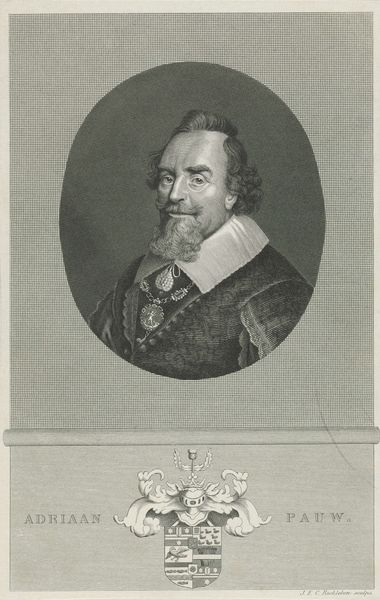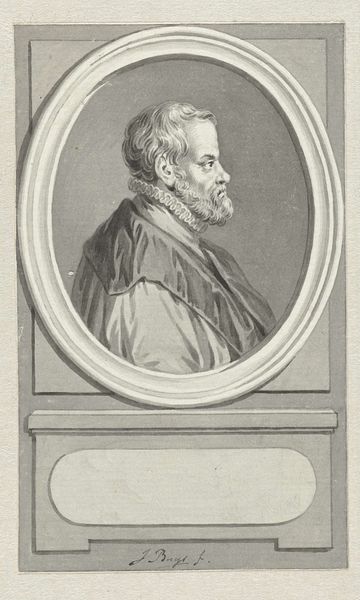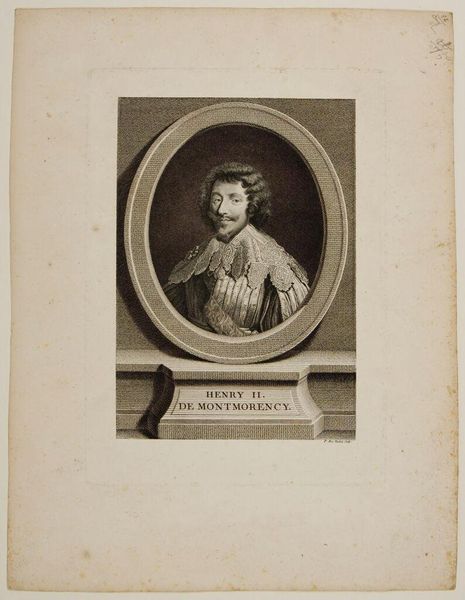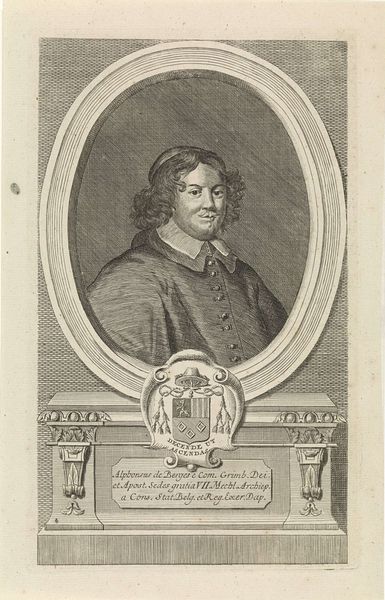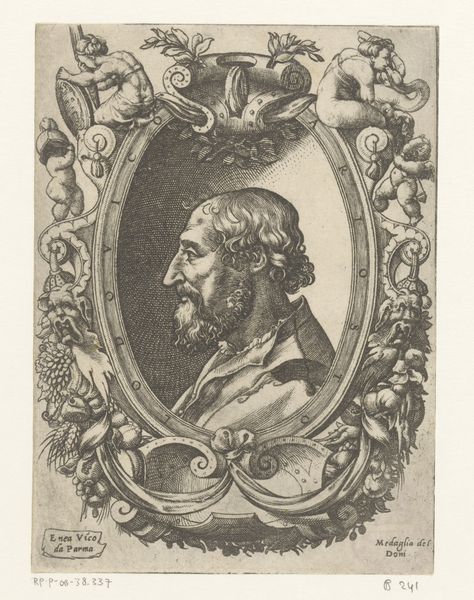
engraving
#
portrait
#
baroque
#
old engraving style
#
form
#
portrait reference
#
line
#
genre-painting
#
engraving
Dimensions: height 345 mm, width 208 mm
Copyright: Rijks Museum: Open Domain
Editor: This is "Portret van Franciscus Junius de jongere" an engraving by Pieter van Gunst from around 1669 to 1731, now hanging in the Rijksmuseum. I find the way the cherubs frame the portrait very compelling. What catches your eye when you look at this engraving? Curator: What fascinates me is the means of production itself. Consider the labor involved in creating such detailed lines with engraving tools, the material properties of the copper plate that allowed for such intricate work, and the consumption of such images in 17th-century society. Editor: I hadn't really considered that, I was more drawn to the overall image. What sort of societal role did these engravings fulfill? Curator: These engravings were more than mere decorations; they served as tools for disseminating knowledge, constructing reputations, and even establishing social hierarchies. Think of the cost of the materials, the skill required - access was certainly limited. Editor: That makes a lot of sense. So it's not just *who* is depicted, but *how* and *why* these portraits were made and circulated that tells us a lot? Curator: Precisely! The very act of producing and consuming art, even prints like this, reflects broader economic and cultural systems. And that cherubs, while seemingly frivolous, might even signify commissioned elements relating to value of family at the time? What kind of labor they would had needed? Editor: It gives me a new perspective on how to appreciate art. It is so much more than just aesthetic experience; it is a record of production, consumption, and cultural exchange. Curator: Yes! Seeing art through a materialist lens truly enriches our understanding of its historical and cultural significance, challenging traditional ideas around art.
Comments
No comments
Be the first to comment and join the conversation on the ultimate creative platform.
